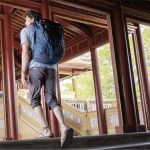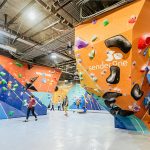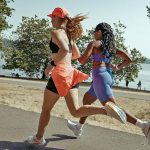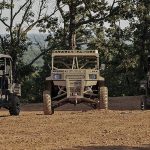The Outdoor Industry Association’s (OIA) first economic impact study in six years shows that for every $1 Americans spend on outdoor gear and vehicles, they spend another $4 on related trips and travel expenses.
“The Outdoor Recreation Economy” estimates Outdoor Recreation Product sales reached $120.7 billion in 2011, while spending on related travel totaled $524.8 billion for total direct spending of $646 billion on apparel, footwear, equipment, vehicles, accessories and services and related travel expenses, including food/drink, transportation, entertainment/activities, lodging, souvenirs/gifts, etc.
That is nearly twice what U.S. residents spent on Motor Vehicles and Parts ($340 billion), Gasoline and Other Fuels ($354 billion), Pharmaceuticals ($331 billion) and Household Utilities ($309 billion.) Put another way, Americans spent nearly as much on snow sports ($53 billion) as they did on Internet access ($54 billion) and more on bicycling gear and trips ($81 billion) than they did on airplane tickets and fees ($51 billion.)
The report finds that Americans have increased their spending on outdoor recreation, including travel, by approximately 5 percent annually since 2005.
The link between outdoor recreation and travel garnered immediate attention at the U.S. Department of Commerce, which has set a goal of attracting 100 million international visitors by 2021.
“It is critical to preserve jobs by protecting public lands and waters-and to ensure their attractiveness to Americans and international visitors alike,” wrote Deputy Assistant Secretary for Services Kenneth Hyatt in a blog entry he posted the day OIA staff briefed him on the report.
OIA has worked closely with Secretary of the Interior Ken Salazar since 2008, but Hyatt’s remarks may signal widening acceptance of OIA’s “Rec Economy” argument, said Kirk Bailey, OIA’s Washington D.C.-based vice president of government affairs. “They picked up on important economic sector that the Department of Commerce should care about,” Bailey said.
OIA discouraged comparisons with their inaugural 2006 economic impact study, which did not include sales of motorcycles, snow mobiles and power boats, but did incorporate a multiplier in an attempt to estimate downstream economic impact. That study estimated spending on outdoor recreation had an economic impact at $730 billion, but was received with some skepticism in Congress, where OIA and its allies cite the research while lobbying Congress to support continued federal spending on parks, public lands and conserving wilderness for recreational use.
The inclusion of some motorsports marks a significant strategy shift for OIA, which represents companies that cater primarily to human-powered outdoor recreation activities such as bicycling, climbing, hiking and paddling. User communities around those activities are sometimes at odds with off-road vehicle users when it comes to access to public lands. OIA’s strategy, however, is to broaden the industry coalition to present a more unified voice to Congress on the need to maintain national outdoor recreation infrastructure.
“The evolution in thinking is leaning toward advocacy of a national outdoor recreation system of parks, waterways and trails that we all rely on,” said Bailey. “We are trying to get Congress to look at that like they look at highways and transportation and power lines and the national energy infrastructure. We need to maintain the quality of what we have because it supports 6.1 million jobs.”















